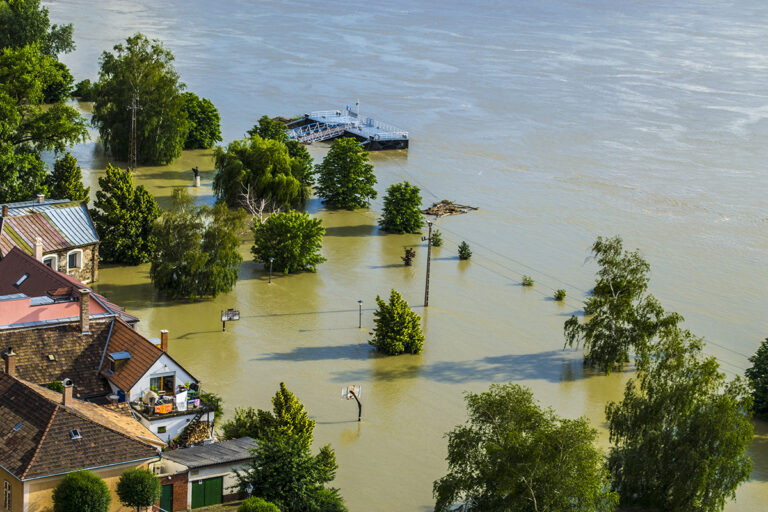
While a hurricane is certainly not the most pleasant thing for any business or family to endure, at the very least, we do have the advantage to being able to predict them, giving us, in some cases, a bit of time to prepare for the worst. Here are a few things your business can do to prepare for a hurricane before, during, and after this terrifying event.
Plan Ahead
- Review your existing property insurance with your company’s insurance agent to make sure you know exactly what (and what is not) covered in the event of a hurricane. Most policies do not include flood damage. One consideration is including business interruption insurance that will cover operating expenses and may compensate you for any income lost during the time of interruption.
- Make copies of insurance policies and your financial records that may be needed to quickly settle your claim and keep them safe in a waterproof container.
- Take a comprehensive inventory of your business and take photographs or even video both inside and out that will expedite the insurance settlement.
- Have a written hurricane policy for your company and all of your equipment.
- Have a specific employee appointed who will implement hurricane procedures, and be sure to have a secondary employee in this role as well. Be sure that any key employees or essential staff members are aware of their responsibilities in the event of a hurricane.
- Have in place a plan to protect computer files and backups, and be sure to have secondary backups as well that are kept off-site. Also keep checks, purchase orders, financial records, and property and vehicle titles off premise as well.
- Be sure to have on hand any necessary tools or building materials that might be needed, including an emergency generator.
- Have a hurricane policy in place for all employees posted in advance, including how they will be notified as to when to report back to work.
- Make sure that all employee emergency contact information is up-to-date.
Before the Hurricane
Building Exterior
- Be sure to check all drains, gutters and downspouts on the roof to make sure they are all fully functional. Failing drains can cause water to collect on the roof, leading to extra weight that could damage the roof and even the interior of the building should the roof fail.
- Anchor or remove any antennas or loose objects located on the roof.
- Properly protect all vent hoods, exhaust louvers, etc., from wind and rain.
- Bring in any display racks or free-standing signage, including trash cans or potted plants. Larger trash containers can be tied together, or even tied to a tree or telephone pole.
- Securely store any flammable liquid drums, but never inside the main building where employees might be.
- Anchor any portable buildings or equipment, such as trailers, to the ground.
- If your offices have exterior glass frontage, clear out that part of the building as best you can. Use plywood or masonite to cover these windows, particularly on the first floor.
- Use sandbags or heavy plastic sheeting with duct tape to seal any first floor doorways to help prevent flood water from getting in.
- If your building does have an emergency generator, be sure to test it thoroughly to make sure that it’s operating properly.
- Ensure all company-owned vehicles, generator, and fire pumps are all filled.
- Trim any large tree branches that may fall resulting in roof damage.
- Take photos or video in advance of your roof before the hurricane; this can greatly speed up your insurance claim.
Building Interior
- Move any computers, boxes or files to an upper floor of the building, or at least elevated on top of tables or cabinets.
- Make sure all desks and tables are clear of any small, loose objects.
- Remove any loosely secured pictures or plaques from office walls.
- Temporarily remove any files or contents from any lower filing cabinets and temporarily store elsewhere for the time being.
- Move important documents away from windows.
- Securely seal any important company documents, including insurance policies, in a water-proof container and temporarily store off-site.
- Shut down and disconnect any and all electrical appliances and equipment in the event of a power surge once electricity is restored.
- Be sure any and all essential files on computers, particularly servers, are backed up, kept in water-proof containers, and stored off-site.
- Ensure any uninterruptible power supply (UPS) units are working properly, and store in as high of an elevated location as possible.
- Cover any office machines like printers, copiers, or specialized equipment, as well as filing cabinets with tarps or plastic sheeting.
- Make an inventory list of what equipment was relocated to make it easier for placing back after the storm.
- Close all windows as well as blinds and drapes in the event of broken glass.
- Check all fire equipment and first aid kits in advance.
- Have a portable hurricane emergency kit assembled that includes insurance policies, a battery-powered radio, batteries, laptop, camera, and anything else you might need to ensure you can keep your business running from a remote location.
- Turn off gas and water, as well as as much electricity as you can at the main breaker box.
- Lock all doors when you leave.
 General
General
- Keep informed on the storm’s progress via radio, TV or NOAA Weather Radio All Hazards receiver.
- Make sure your employees have adequate time to make personal preparations.
- Make sure you have a Shelter-in-Place plan, and that your disaster kit is fully stocked, including fresh batteries and USB power bricks.
- Make sure you have another contact that is aware of your company’s relocation plan.
- Make sure that any employee who volunteers to stay on-site has any necessary supplies, like bottled water, nonperishable food, batteries and flashlights. If an official evacuation order is in place, though, ensure no employees are left behind.
During the Hurricane
- Make sure that during the height of the storm, all employees are accounted for and in a safe place in the building.
- If a power failure occurs, turn off non-essential breakers at the electricity breaker box to prevent power surges once electricity has been restored.
- Keep a close eye on any electrical equipment that must stay powered on or online.
- Once the event is over, check over the building looking for roof leaks, broken pipes, and any fire or structural damage.
After the Hurricane
- Survey any damage, both inside and out, looking for leaking gas or flammable liquids, live wires, or damage to the foundation or underground pipes.
- While turning back on the electricity at the breaker box, be sure to do them one at a time, checking each office to ensure everything is working as it should. If there is any question, immediately contact your electric company.
- Do not turn on any computers if you suspect low voltage power fluctuations or low air conditioning output as this can cause power surges to the computers that might damage them and their data.
- Take photos or even video of your business both inside and out to help with any insurance claims.
- Make as many temporary repairs as you can to prevent any further damage to your business or even looting. Board up any broken windows as necessary and temporarily seal up any torn roofing.
- Clean out any drains, gutters and downspouts to prevent any further drainage issues.
- If your business owns any equipment that might be useful to local emergency management officials that you are not immediately in need of, contact them as soon as possible.
.
.
D. A. Lamont Public Adjusters are known industry wide for our integrity and success in proving claims to the insurance company. We are licensed professionals in estimating, preparing and negotiating property damage claims. Our team brings a total of 75+ years of experience to the table in commercial roofing and building industries. We have evaluated thousands of commercial buildings and millions of square feet of roof area, most of which had been previously denied by the insurance company.
Call us at 800-342-6690 or email don@dalamont.com to see if there’s anything D.A. Lamont Public Adjusters can do to help your commercial business.






